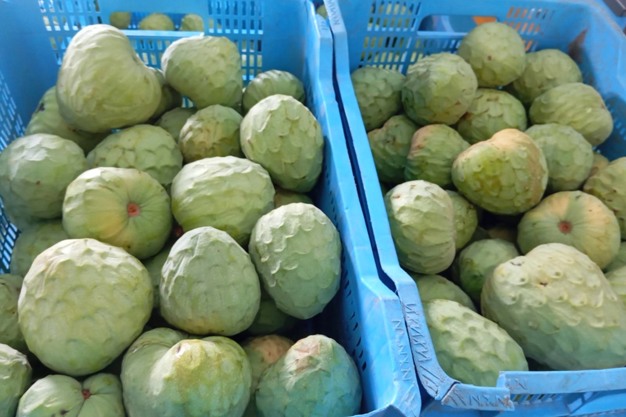In the next few weeks, the cherimoya campaign will start again in the Spanish province of Granada after one of the longest seasons in living memory came to a close in June, reports the PDO Chirimoya de la Costa tropical de Granada-Málaga. The 2023/24 season lasted from August last year to June and the production increased by 9%, to 45,000 tons.

"This year, we've started harvesting the fruit a week later than last season, which began really early. At Frutas Los Cursos, we expect our production to increase by between 15 and 20%, to around 5 million kilos," says Víctor Rodríguez, Sales Director of the company based in the municipality of Almuñécar, in Granada.
"The weather has been good this year, with cooler nights in July, which is the most important month for the cherimoyas, so we are expecting very good quality fruit and good sizes."

"The prospects for the 2024/25 campaign are very good. At Los Cursos, 80% of our cherimoyas go to large supermarkets across Europe, where consumption is growing every year. France and Portugal are our fruit's main buyers, although they are not the only ones. We ship our cherimoyas to destinations from Scandinavia to Saudi Arabia or Kuala Lumpur, and more and more markets are showing interest in this fruit, for which we almost have the exclusive rights."
Spain is, in fact, the world's largest cherimoya producer, and the Costa Tropical of Granada accounts for 95% of the Spanish acreage devoted to this subtropical crop which, as explained by the PDO Chirimoya de la Costa Tropical de Granada-Malaga, was brought from the American continent in the 18th century.
At the end of the 19th century, agricultural producers in the town of Jete, located in the valley of the Río Verde, in Granada, selected the trees that seemed to be better adapted and productive in the area. This gave rise to the variety that is grown today in 99% of Granada's Costa Tropical: the Fino de Jete.

"Cherimoyas are also a crop that allow for a really good agronomic management through very basic techniques, such as pruning, with which we can induce a flowering, and manual pollination. This way, we can act against cold or heat waves and always guarantee a production, which is not achievable with mangoes or avocados," says Víctor. "It also offers the advantage of not needing as much water as other subtropical crops, and of growing using hardly any phytosanitary products. It is a fruit that grows naturally."
"We have seasons in which we can supply the market with freshly picked fruit for more than eight months, and the Fino de Jete variety has a longer shelf life than other cherimoyas grown in other parts of the world, so we are reaching increasingly distant destinations and a growing number of consumers," says Víctor.
"At Frutas Los Cursos, we have been working with this exceptional fruit for 35 years, and have taken a step forward in terms of innovation with the development of the world's first cherimoya juice obtained by high pressure, for which we have recently received an innovation and sustainability award."

"We are still as enthusiastic as we were on the first day and we would love to continue growing with this white gold from our lands."
 For more information:
For more information:
Frutas Los Cursos
C/ Laderas Castelar 46. Almuñécar, Granada, Spain
Tel.: +34 958 630 474
[email protected]
https://frutasloscursos.com
